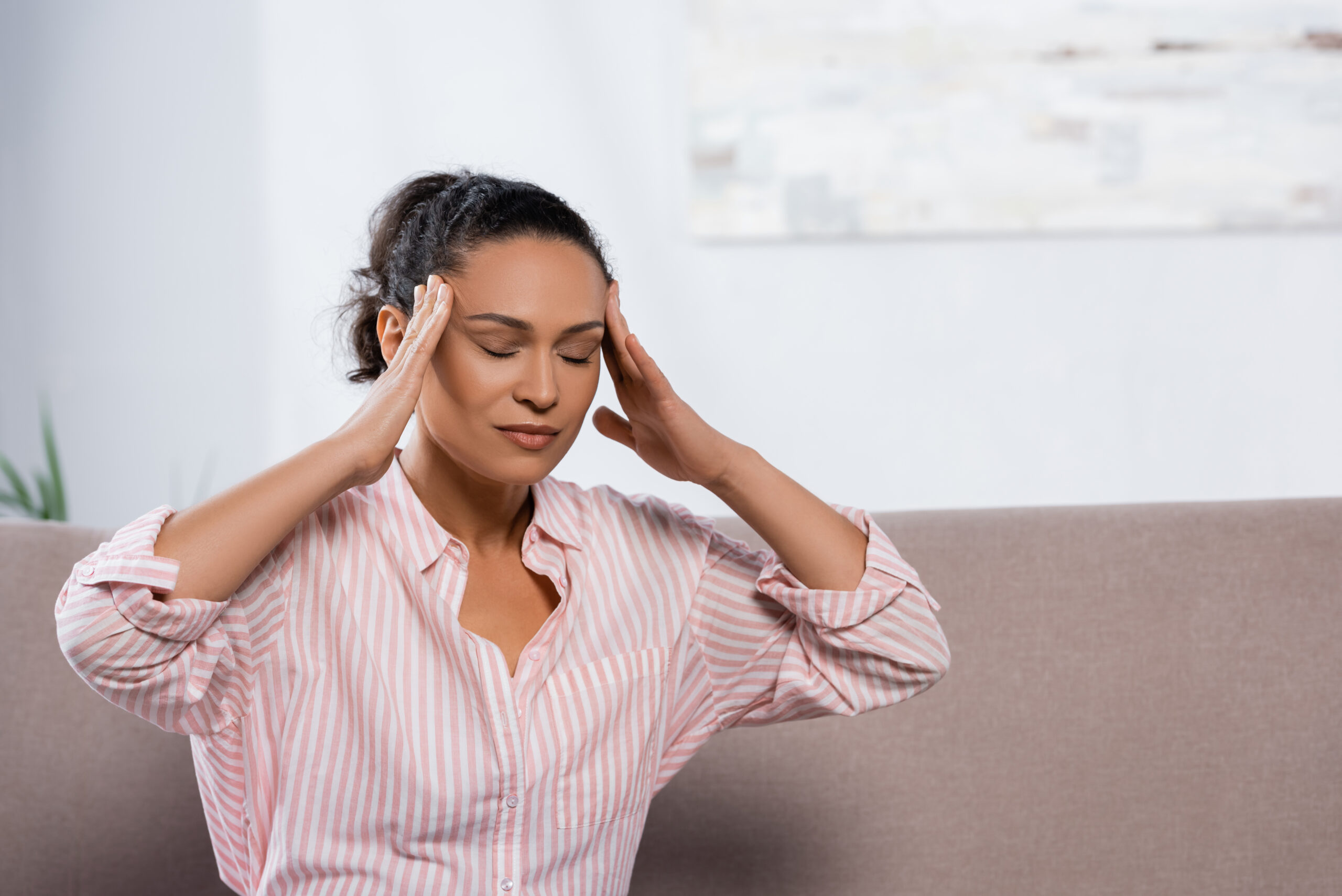Headaches occur occasionally in 90% of people, but affect about half of them regularly, so almost everyone can experience them. An additional problem is that in some cases it can be accompanied by other symptoms such as nausea, dizziness, balance problems, fatigue, and even visual and speech problems.
Headache means pain in any area of the head. It can be unilateral or bilateral, affecting a well-defined area or radiating in different directions.
The type of pain may be sharp, stabbing, throbbing, pressing or dull, it may cause shooting pains, or it may also be a mild discomfort.
The duration of the headache can vary from a few minutes to hours, but it can also last for several days.
Headaches do not usually indicate a serious illness, but in some cases they can indicate a chronic illness or life-threatening condition, and many medicines can also cause headaches as a side effect.
Types of headache
There are several different types of headache, with different causes.
The two main types of headache can be distinguished according to whether the headache is the disease itself (primary) or a symptom of another disease (secondary).
This distinction determines and influences the treatment of headache, as primary headache requires different treatment than secondary headache, which responds best to treatment of the underlying cause, the disease.
Primary headaches
Primary headaches are not a symptom of some other disease, but are often caused by over-activation of the brain or over-sensitivity of pain receptors.
Excessive chemical activity of the nerves surrounding the blood vessels inside the skull may be involved, but pain in the muscles of the neck and head may also play a role.
Primary headaches can be divided into four groups: migraines, tension headaches, cluster headaches and other headache groups.
Migraine
Migraine is one of the most common neurological conditions seen by doctors. Patients experience a headache that starts in a seizure, is unilateral, pulsating, throbbing, intense, and may be accompanied by nausea, vomiting, sensitivity to light and sound. Migraine may sometimes be accompanied by introductory symptoms related to vision, flickering, blurred vision or blind spots, which usually precede the onset of migraine. This phenomenon is called aura. Migraines may develop without aura.
Migraine headaches may be caused by genetic and environmental influences, but they can also be triggered and influenced by a number of factors, including hormonal changes (e.g. menstruation), stress, fatigue, consumption of certain foods (e.g. alcohol, chocolate, coffee, cheese, smoked meats) and environmental influences (e.g. fronts). Daily activity can be affected. Physical activity can increase migraine headaches.
Therapy is divided into acute and preventive (interval) treatment. Seizure therapy can be further divided into specific and non-specific therapy. The latter includes analgesics, non-steroidal anti-inflammatory drugs. The indication of specific seizure therapy is a medical, specialist competence.
Intermittent therapy is needed when 4 or more attacks occur per month or when seizure management is not feasible.
Tension headache
The most common type of headache is tension headache, which accounts for around 80 per cent of all headaches and is experienced by almost everyone at some point in their lives.
It is of unclear origin and is typically a mild headache that can occur in any area of the head. A characteristic symptom is dull, not too severe pain, described by some as a tightness that almost surrounds the head like a tight belt. It is not usually confined to one side or part of the head, but spreads bilaterally or over the whole head; it often spreads to the shoulder region.
They usually have no accompanying symptoms and usually respond well to over-the-counter painkillers. The pain can last from 30 minutes to several days and can range in intensity from mild to moderate. Most of the time it does not significantly affect normal daily activities, but it can cause loss of concentration, moodiness, loss of appetite, irritability. Tension headaches usually occur during the day and, unlike migraines, are not worsened by physical activity.
Tension headaches can be divided into two groups: intermittent, which occurs infrequently, and chronic, which is persistent. The most common causes of tension headaches are stress, depression and anxiety; lack of sleep, sleep deprivation; lack of physical activity; poor posture; menstruation, pregnancy, menopause; certain medicines (e.g. antihypertensives, too many painkillers).
Cluster headache
An acute, severe, one-sided headache that occurs in bouts and is usually accompanied by symptoms attributed to a dysfunction of the autonomic nervous system on the same side. Cluster headache usually occurs daily for several weeks as a hemiplegic headache, mainly around the eye.
It is rare, affecting less than 0.1 per cent of the population and more common in men who smoke heavily. The pain usually lasts for 1-2 hours.
Typical accompanying symptoms are tearing on the same side, nasal congestion or runny nose; reddening of the eye due to dilatation of the conjunctiva. In contrast to migraine headaches, lying down usually makes the symptoms worse, but movement can relieve or even eliminate them.
Other rare headaches
These include, but are not limited to, headaches during sleep, headaches caused by cold, coughing, exertion or physical exertion, and headaches associated with sexual activity.
Alcohol consumption, consumption of certain foods/drinks (especially those high in nitrates such as wine or cold cuts), lack of sleep, poor posture and skipping main meals may also play a role in the development of primary headaches.
Secondary headaches
A secondary headache is a symptom of another condition that activates pain receptors in the head. For example, headaches can be a common symptom of infections and inflammatory diseases, caused by insufficient fluid intake, dehydration (e.g. as part of a hangover), but can also be a symptom of serious diseases such as unrecognised, untreated or undiagnosed hypertension not well controlled by medication; encephalitis, meningitis; acute sinusitis, otitis media, dental diseases; viral infections (e.g. COVID-19 infection or influenza). It may be associated with panic disorder, trigeminal neuralgia (pain of one main nerveon the face, which radiates to the face, chin and teeth), or it may be a symptom of glaucoma (an abnormal increase in the internal pressure of the eye).
In rare cases, headaches can also be a sign of brain lesions or events, such as brain aneurysms (abnormal bulge or ballooning of blood vessels in the brain), brain tumours or other brain involvement, trauma to the brain or skull, or congenital abnormalities of the brain.
Sudden onset headaches may also be a sign of conditions requiring emergency care, such as stroke or cerebral infarction, carbon monoxide poisoning.
It can occur with cold food or drink (e.g. ice cream), but can also be a side effect of many medicines.
See your GP if:
• the headache occurs more often than usual;
• headaches that are more severe or of a different intensity than usual;
• The headache is getting worse with medication;
• headache interferes with daily activities.
Primary headaches
The doctor will ask the patient in detail about their complaints, their medical history and other medical conditions. He or she will then perform a physical examination and, if necessary, may request additional tests, such as laboratory tests and imaging techniques. In some cases, the patient may be referred to a specialist chronic disease or headache unit.
Sources:
https://www.hazipatika.com/eletmod/fajdalom/cikkek/a_fejfajas_es_tipusai
https://www.webbeteg.hu/cikkek/fejfajas_migren/24269/a-fejfajasok-okai
https://geomedical.hu/2022/11/29/fejfajas-tipusai/
https://egeszsegvonal.gov.hu/f/1012-fejfajas.html


